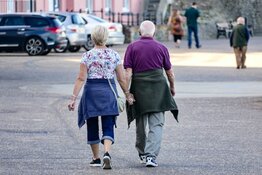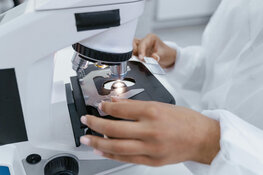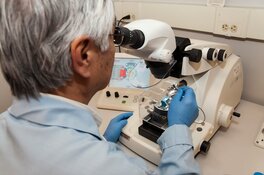The Life Sciences Report: Colin, would you bring us up to date on RepliCel Life Sciences Inc.'s (RP:TSX.V; REPCF:OTCQB) trials?
Colin Lee Novick: From a biotech company's point of view, one of the important things is successfully meeting clinical trial endpoints. But from a biotech investor's point of view, what's oftentimes really important are the answers to the questions: When are you going to have your partner and where are you going to have that exit?
Both these questions were top-of-mind for RepliCel and its investors this year. Firstly, RepliCel successfully finished the clinical trials for RCS-01 and RCT-01, for tendon regeneration and skin rejuvenation, respectively. What followed is that these have fueled discussions with potential partners.
For instance, RepliCel had one clinical trial, Phase 1/2a, for tendon repair in chronic Achilles tendinosis on the RCT-01, a randomized 3:1, double-blind, placebo-controlled trial at the University of British Columbia Sports Medicine Clinic with eight participants. As for final results, the trial met its goal and established a complete safety profile at six months that showed no serious adverse events related to the study treatment or injection procedure. Usually, with the injection, you're going to get some mild irritation, but that's not a large safety issue. It allows RepliCel to proceed to the next stage.
But importantly, using a VISA-A scale for Achilles tendon injury severity, the RCT-01 participants had an overall 15.3% improvement in their total score compared to baseline. This is an intragroup comparison. When the company moves on to the more latter-stage clinical trials, it will naturally also involve intergroup comparisons. For the time being, this baseline improvement of 15.3% was a good start to eventually showing probable efficaciousness, which is the threshold of proof sufficient to qualify a product like RCT-01 to be considered for conditional approval in Japan.
Notably, two patients showed select measures of near complete recovery in function, again by the VISA-A scoring. So that's two patients out of six that received the active injection.
The study also measured Visual Analogue Scale (VAS) pain. Sometimes, when you go to the hospital, they'll show you a ruler. On one end it has a face that's contorted in pain and on the other end a really happy face. Patients are instructed to point to where they are. For pain measurement, it's almost universally used to gauge how much pain a patient currently is experiencing.
For the five RCT-01 patients, they had an average VAS improvement score of 62.9% over baseline. Again, this is a small patient population, so it's hard to discern how statistically significant this is, but 62.9% is a very good initial indication of possible efficacy. These four out of five were able to demonstrate clinically relevant signals of improvement in pain and loading. Loading generally means running and jumping.
Three out of the five participants had an average VAS improvement of 55.2% over baseline, demonstrating improvement in pain on palpation. And two patients had the nearly complete elimination of pain.
So, we're seeing some really good signs here. Tendon repair in Japan—and also in Canada and the U.S.—is not a market that's as large as lower back pain or knee pain, but it's definitely a large and important one, especially among the active aging, athletes and military personnel.
Arguably even more relevant than the tendon study is the aging and ultraviolent-damaged skin trial for RCS-01, dermal rejuvenation. RepliCel sponsored this trial in Germany, near where RepliCel’s technology originated. The randomized, double blind, placebo controlled trial was conducted at one of the world's leading skin-aging research centers—the IUF Leibniz Research Institute for Environmental Medicine. It was a larger study, 17 participants, with the primary endpoint safety and tolerance, and the secondary endpoint measuring biomarker endpoints correlated with anticipated efficaciousness at 6 and 12 months.
While the final clinical data won't be available until year-end, the interim results showed no serious adverse events and a nearly twofold increase in gene expression causing the related biomarkers in the skin. This is after a single injection of RCS-01. At this point it was actually statistically significant leading to an expectation that such injections will lead to an increased number of collagen fibers in the skin with meaningful aesthetic impact.
Increased collagen production in the skin and reduced collagen degradation are generally associated with fewer wrinkles and the repair of sun-damaged skin. We're talking to companies that are into skin care and that are trying to find a way into regenerative medicine that doesn't take them down the road of becoming a bona fide pharmaceutical or drug maker. Because of the unique regulatory option in Japan for commercializing such products under the Japanese Act of the Safety of Regenerative Medicine route to market, this is the type of product they have expressed more interested in.
TLSR: On Sept. 13, RepliCel announced that it is discussing potential new partnerships. Would you share your thoughts on that announcement and those potential partnership agreements?
CN: In RepliCel's recent announcements, the company did mention that it is working with us, CJ PARTNERS, in Japan. We have been working on and off with Lee Buckler, RepliCel's CEO, over the last couple of years. After RepliCel's pretty exciting results, especially from its RCS-01 and RCT-01 trials, we decided to start re-approaching the market here in Japan.
As you know, Japan and the United States are two of the hotspots for companies that are looking to license exciting regenerative medicine technology. While autologous cell therapies have a somewhat cooler reception in Japan than allogeneic products, RepliCel's products, as can be seen by its RCH-01 licensing agreement with Shiseido Company Ltd. (4911:TYO), are unique and will allow it to approach a much wider group of companies than your regular biotech or even regenerative medicine company.
If you're developing a cell therapy for diseases or conditions covered by health insurance, or some sort of recognized ailment by the U.S. FDA or the Japanese regulator, the Pharmaceuticals and Medical Devices Agency (PMDA), you're going to want to release that therapy under the Japanese PMD Act, which allows the drug to be covered by the Japanese national health insurance system and appropriately reimbursed.
But if you have an ailment that is not covered, such as something that is more cosmetic in nature, convincing the PMDA and the Central Social Health Insurance Council that this is a worthwhile ailment that needs to be reimbursed by the Japanese government may be difficult.
Of the three products that RepliCel has—for tendons, skin and the hair androgenic alopecia product—one is a shoe-in for the PMD Act, the tendon product. The other two would allow it to release under something called the Act on the Safety of Regenerative Medicine (ASRM), which is a new law passed in tandem with the revision of the PMD Act in 2013-2014.
If you do decide to go the PMD Act route, you have to run the standard battery of three clinical trials—Phase 1, Phase 2, Phase 3. With regenerative medicine, there are ways you can combine a few of those, but it generally takes a lot longer to get the product to the market. While the conditional approval mechanisms under the PMD Act may provide early access to the market for some products, it does not obviate the need to submit pivotal clinical data to obtain inevitable final approval.
Under the ASRM route, the manufacturing facility is regulated by the PMDA but the products themselves are overseen by the Ministry of Health, Labor and Welfare, so getting to the market is a lot faster.
That's where it makes sense to re-approach companies in Japan. We needed to look at the ASRM route and broaden the horizon and scope of the type of companies that we're looking at, not just pharmaceutical companies but also companies that are into healthy living or companies that are involved in over-the-counter pharmaceuticals, for instance. All of a sudden, you go from a denominator of pharmaceutical companies to a denominator broad-reach life sciences companies.
Over the last couple of months, we've been talking to a number of companies, and have generated interest among this broader category. A lot of that is due to the progress that Lee and his team have been able to make in generating positive clinical data, and in the progress that Shiseido has been able to make in preparing for the release of the RCH-01 product in Japan as well.
We anticipate that as we start to see a more success from the Shiseido partnership, that's going to give a lot of companies in similar circumstances the assurance that this can be done.
I should probably add one caveat. You would think that Shiseido being a cosmetic company would be more interested in RepliCel's RCS-01, the skin product, as opposed to the RCH-01. Little known fact, though, is that Shiseido originally started off as a hair company, and it morphed into a cosmetic firm. When it started looking into regenerative medicine a few years ago, it was decided that it would go back to its roots (no pun intended) and start looking for androgenic alopecia products. It wanted to steer clear of skin products for the time being and try to draw a line between its cell therapy products and skin business because it doesn't want any cross-contamination, whether it be positive or negative, across those lines. Only after it knows that the RCH-01 product is going to be a success will it potentially consider looking into skin products as well. So that's why in the meantime we've decided to look elsewhere for the RCS-01 product partnership.
The Big Four—Deloitte, PWC, KPMG and Ernst & Young—have financial advisory services teams and are starting to get in the game of licensing in regenerative medicine and other types of technology in the life sciences industry. One of the two companies that we're in discussion with actually was brought to the negotiating table by one of these Big Four.
TLSR: As far as partnerships, would a larger company be looking for a specific data point before entering an agreement? Or is it doing its due diligence right now to figure it out?
CN: One thing that you need to know about Japan is that everything takes a long time. It's not that they're looking for a specific data point per se. Rather, they want to be able to reduce risk as much as possible and be able to show in a business model that this is going to make money for the company and generate positive cash flows within the foreseeable future. They don't want to be talking 10 years down the line. That's not how a lot of these non-pharma companies operate.
Now, once you have that nailed down, then the tough part starts happening here in Japan because they make decisions by consensus more often than not. All of a sudden, you have all lots of different types of management committees and meetings that you have to go through. Each one raises a new set of questions. Japanese companies are trying to get through their internal processes, and they're hyper risk averse. So they want to make sure that before they run it up the flagpole, again that they've answered all the questions that could possibly come up.
So, if you're looking at a company like RepliCel which has a strong case for a Japanese partnership, just because the deal doesn't show up in the first three months doesn’t translate into a lack of progress or disinterest. Japanese companies are deliberate and they take their time. But in the end, once they do sign an agreement, you tend to have a commitment not easily broken.
TLSR: Has there been much partnership activity in this area in Japan?
CN: There have been many such deals, the most recent of which was when Asahi Kasei Corp. (3407:TYO) announced that it had signed a deal with a Belgian company, Bone Therapeutics SA (BOTHE:EN), for orthopedics and bone diseases. The licensing deal with Bone Therapeutics was for its product, PREOB—this is for the treatment of osteonecrosis of the hip—and eventually, further down the line, other orthopedic and bone applications as well. The deal provides Asahi Kasei exclusive market rights for Japan with an option to negotiate an expansion of the license to other countries.
I was very happy to see that Japanese companies were again starting to look at autologous therapies. For a while, there was a heavy focus on allogeneic, off-the-shelf therapies. But we're starting to see signs of companies that need a little bit more targeted, maybe even tailored, approach for an individual patient paying more attention autologous therapies and putting them on the table. When we started to see signs of companies perking up interest in autologous treatments a few months ago, RepliCel approached us again and said we should probably start looking at this angle.
I hope to see other deals involving autologous treatments for specific ailments further down the line. I do think that RepliCel would be a very good bet for an investor who's looking to find a company that has a proven track record in Japan, which is always an important aspect for deal-making in Japan, and a company that has some positive clinical data results for both RCT-01 and eventually hopefully for RCS-01, if things continue as they have in the interim analysis.
So again, the market seems to be right. The company seems to be in the right position as well. I'm excited to help it move forward from here and eventually get to a point where I think investors can be happy.
TLSR: Thanks for your time, Colin.
Colin Lee Novick is cofounder and managing director of CJ PARTNERS. As an American born in South Korea and raised in Japan, Novick graduated from Japanese public schools to study at Cornell University. After working as a management consultant at Deloitte Tohmatsu Consulting within the Financial Services Industry Group for three years, Novick sought out a new industry at SMBC Nikko Securities, where he facilitated mergers and acquisitions. In 2012, Novick and cross-cultural colleague Jason David Sieger founded CJ PARTNERS Inc.
Read what other experts are saying about:
Want to read more Life Sciences Report interviews like this? Sign up for our free e-newsletter, and you'll learn when new articles and interviews have been published. To see recent articles and interviews and with industry analysts and commentators, visit our Streetwise Interviews page.
Disclosure:
1) Patrice Fusillo conducted this interview for Streetwise Reports LLC and provides services to Streetwise Reports as an employee. She owns, or members of her immediate household or family own, shares of the following companies mentioned in this article: None. She is, or members of her immediate household or family are, paid by the following companies mentioned in this article: None.
2) The following companies mentioned in this interview are billboard sponsors of Streetwise Reports: RepliCel Life Sciences Inc. Streetwise Reports does not accept stock in exchange for its services. Click here for important disclaimers. The information provided above is for informational purposes only and is not a recommendation to buy or sell any security.
3) Colin Lee Novick: I, or members of my immediate household or family, own shares of the following companies mentioned in this article: None. My company has a financial relationship with the following companies mentioned in this interview: RepliCel Life Sciences Inc. I determined which companies would be included in this article based on my research and understanding of the sector. I had the opportunity to review the interview for accuracy as of the date of the interview and am responsible for the content of the interview.
4) The interview does not constitute investment advice. Each reader is encouraged to consult with his or her individual financial professional and any action a reader takes as a result of information presented here is his or her own responsibility. By opening this page, each reader accepts and agrees to Streetwise Reports' terms of use and full legal disclaimer. This article is not a solicitation for investment. Streetwise Reports does not render general or specific investment advice and the information on Streetwise Reports should not be considered a recommendation to buy or sell any security. Streetwise Reports does not endorse or recommend the business, products, services or securities of any company mentioned on Streetwise Reports.
5) From time to time, Streetwise Reports LLC and its directors, officers, employees or members of their families, as well as persons interviewed for articles and interviews on the site, may have a long or short position in securities mentioned. Directors, officers, employees or members of their immediate families are prohibited from making purchases and/or sales of those securities in the open market or otherwise from the time of the interview or the decision to write an article, until one week after the publication of the interview or article.










































